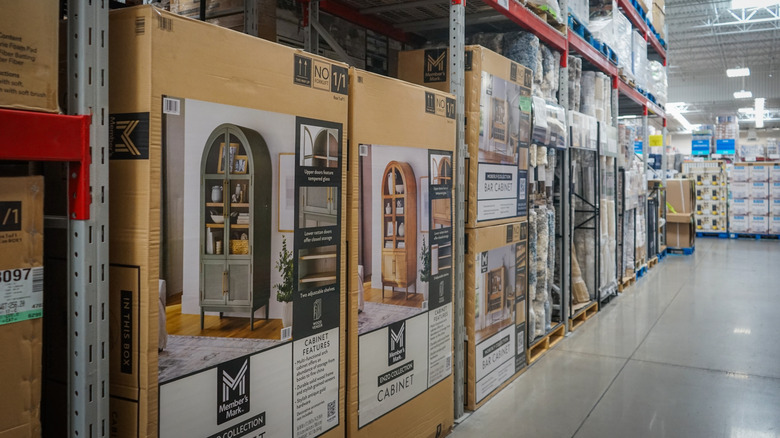Sam's Club Is Owned By This Massive Grocery Chain
Sam's Club might seem like a huge company, and indeed it is, with nearly 600 locations spread across the continental U.S., a presence in 44 states and Puerto Rico, and more stores opening every year. But as big as Sam's Club might be, it's actually part of an even larger retail network. That's right, Sam's isn't a standalone company, like rival chains Costco (which Sam's has beaten in some ways) and BJ's; it's a subsidiary of Walmart.
Walmart founder Sam Walton saw how small business owners might not have been able to obtain all the goods they needed to thrive, so he decided to step in and do something about it. That "something" was founding Sam's Club in 1983, with the first location to open in Midwest City, Oklahoma. Just four years later, Sam's boasted one million members, proving the club warehouse model was quite popular, and not just with small business owners.
However, despite Walmart ultimately owning Sam's Club, the two companies have operated separately for most of their shared histories. For example, Sam's has its "own inventory and purchase-management systems, its own engineers, warehouses and product managers" (via ModernRetail.com). But recent developments have brought the two chains closer, with Sam's and Walmart announcing in September 2024 that they were merging supply chains in a few months.
Key ways Sam's Club differs from parent-company Walmart
We outlined a few ways that Sam's Club operates independently of its parent company, Walmart, but there are other key examples of how the Club differentiates itself from its corporate overlord. For instance, its business model is radically contrasting in nature; most obviously, Sam's Club is just that, a members-only club — though non-members can eat at the food court — where customers pay a yearly membership fee (and may spend more in-store to justify it), unlike Walmart, where anyone can enter and shop. But if you were to compare the number of SKUs, you would also find that Sam's carries far fewer, up to 7,000, than Walmart does, which numbers in the hundreds of thousands in Supercenters.
Part of the reason Sam's Club carries a lesser number of SKUs is that its goods are sold in bulk, including larger sizes or multiple original-sized products, bound together and sold as a single unit; the stores would have to be even larger than they already are to accommodate more items. But it's also a calculated measure to give customers the idea that at Sam's, they can expect fewer, but more premium, high-quality goods, while at Walmart, it's all about having a wide selection from which they can choose for themselves.


